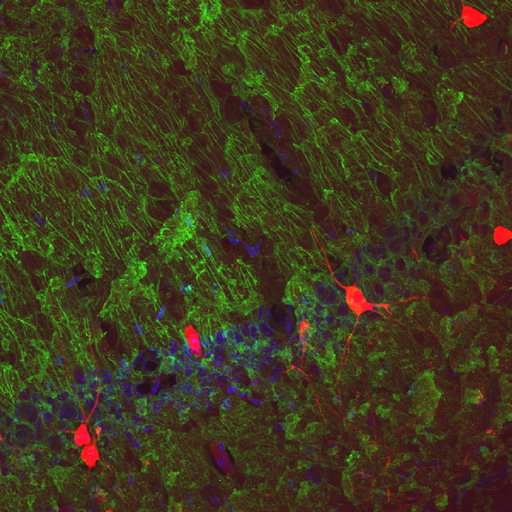
New findings show a non-invasive way to administer anxiolytic neuropeptide S (NPS). While working with mice, the findings show that intranasally administered neuropeptide S was absorbed into the brain through the nasal mucosato and lowered anxiety and altered neuronal activity directly in the hippocampus.
Max Planck researchers have succeeded in showing in experiments on mice that the anxiolytic substance neuropeptide S (NPS) can be absorbed through the nasal mucosa and unfold its effect in the brain. Having bound to its receptors, the neuropeptide S reaches particular neurons in the brain in this way. Just four hours after the administration of the drug, the tested mice showed less anxiety. Altered neuronal activity was also measured directly in the hippocampus, an important brain structure for learning and memory. These findings confirm that neuropeptide S is a promising new drug for the treatment of patients suffering from anxiety disorders.
Medications that target the brain must overcome numerous hurdles, as it is a very difficult organ for drugs to access. For example, if a patient takes a pill, the drug must make its way through the digestive system, the liver, and the blood-brain barrier. This often gives rise to undesired side effects. In addition, a lot of the necessary active substance is lost or it is altered in some way, or completely destroyed. The recently discovered anxiolytic neuropeptide S (NPS) would not be able to reach the brain in this manner. Treatment with this substance would only be conceivable by injection into the brain, a process that patients could not be expected to endure. Therefore, Ulrike Schmidt’s research group at the Max Planck Institute of Psychiatry examined, with the aid of mice, whether NPS could be absorbed into the brain through the nasal mucosa and take effect there.
In a series of sophisticated experiments, the scientists succeeded in visualizing the path taken by intranasally administered NPS to special neurons in different regions of the brain. With this non-invasive method of administration, the targeted and highly specific absorption of the substance in the brain cells takes place through the binding of the substance to the NPS receptor. Just 30 minutes after administration through the nasal mucosa, small volumes of NPS had reached the mice brains. The anxiolytic effect unfolded four hours later: it could be observed that the mice had actually become less anxious. It was thus possible to demonstrate the anxiolytic effect of neuropeptide S when administered intranasally. The exact molecular mechanism of action of NPS is still unclear. However, as electrophysiological tests have shown, it clearly influences the signal transmission pathways between the neurons of the hippocampus. The researchers suspect that NPS has an attenuating effect on certain signals of the brain’s emotion center and less anxiety is perceived as a result.
“Our findings open the door to the development of new drugs based on neuropeptide S for patients suffering from pathological anxiety,” says psychiatrist Ulrike Schmidt. “The simple administration and the fast and successful effect of an anxiolytic nose spray could be a real blessing for many patients who suffer from anxiety disorders like panic attacks and post-traumatic stress disorders.”
Reference: “Intranasally Administered Neuropeptide S (NPS) Exerts Anxiolytic Effects Following Internalization Into NPS Receptor-Expressing Neurons” by Irina A Ionescu, Julien Dine, Yi-Chun Yen, Dominik R Buell, Leonie Herrmann, Florian Holsboer, Matthias Eder, Rainer Landgraf and Ulrike Schmidt, 25 January 2012, Neuropsychopharmacology.
DOI: 10.1038/npp.2011.317